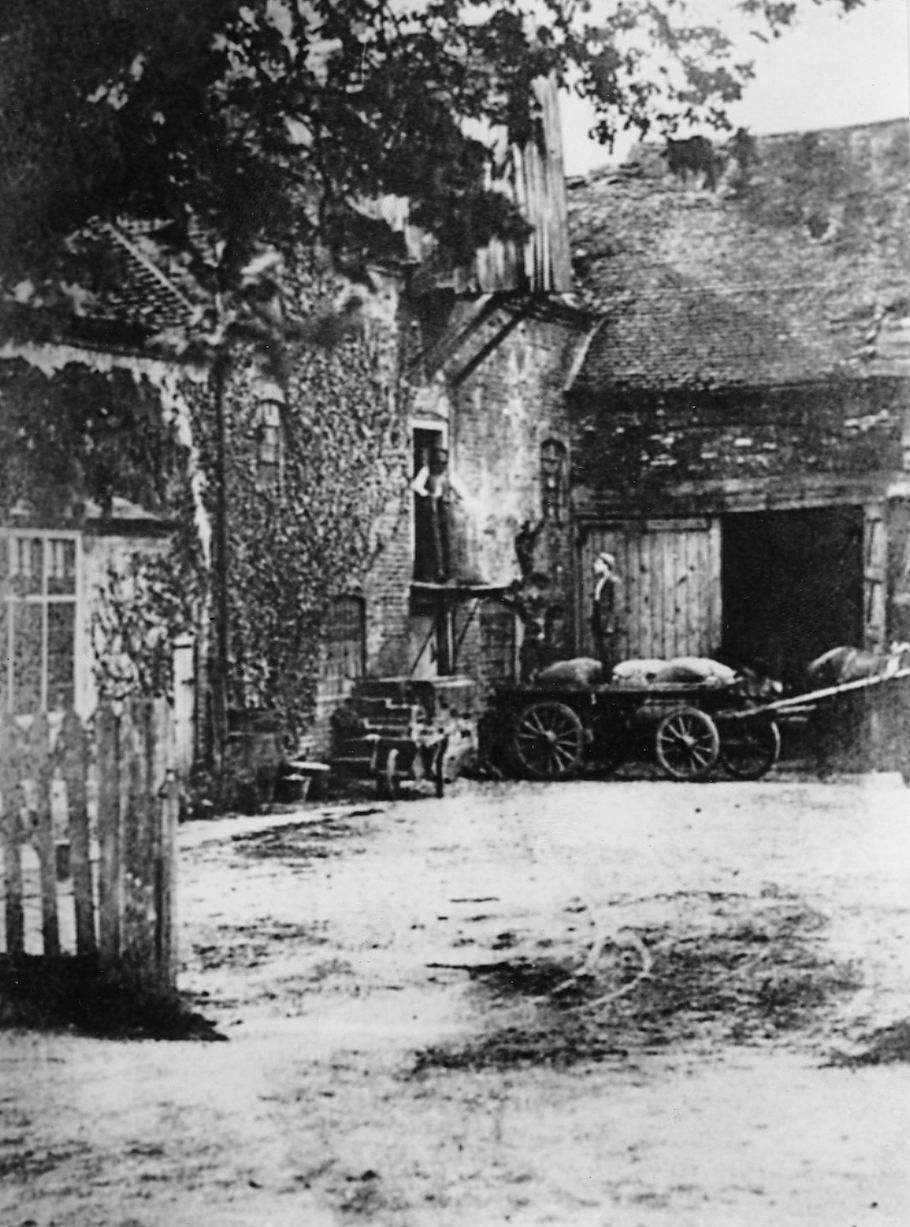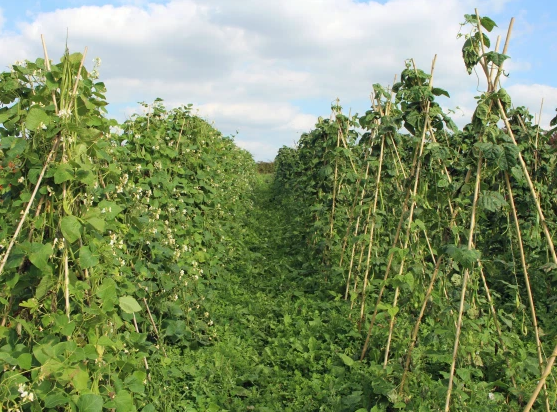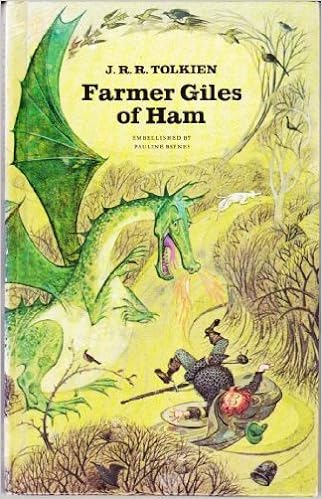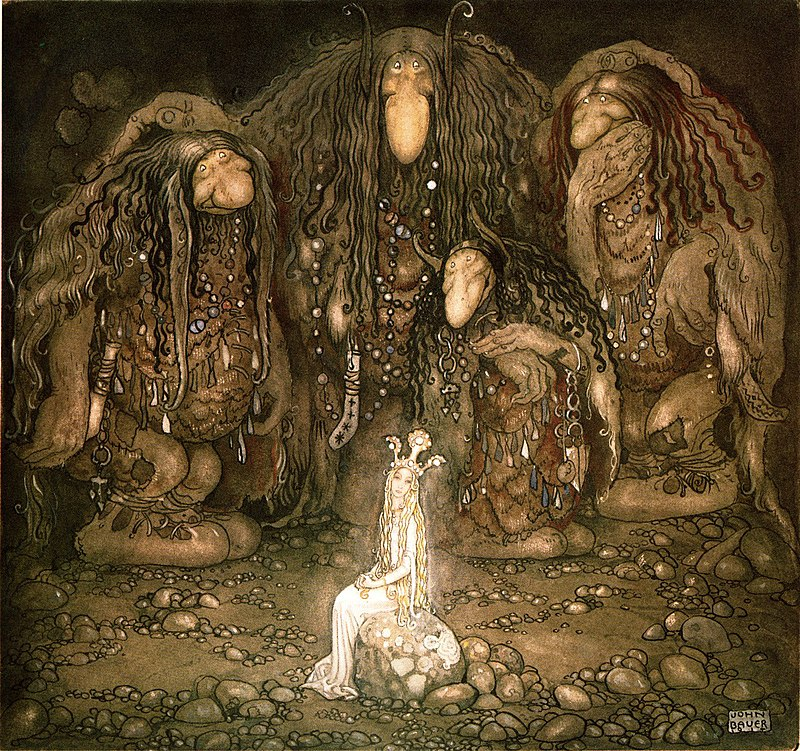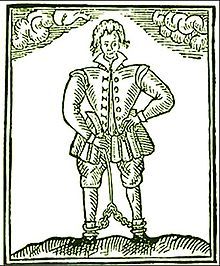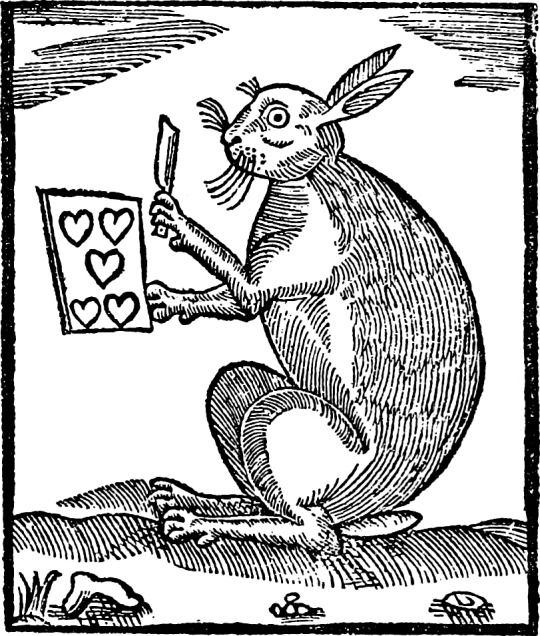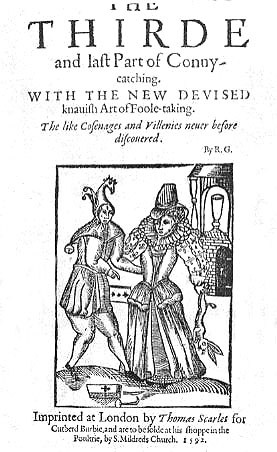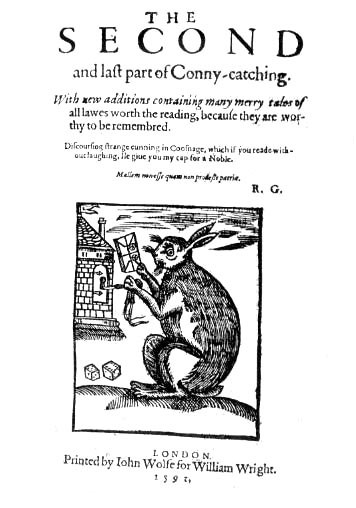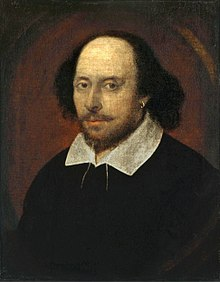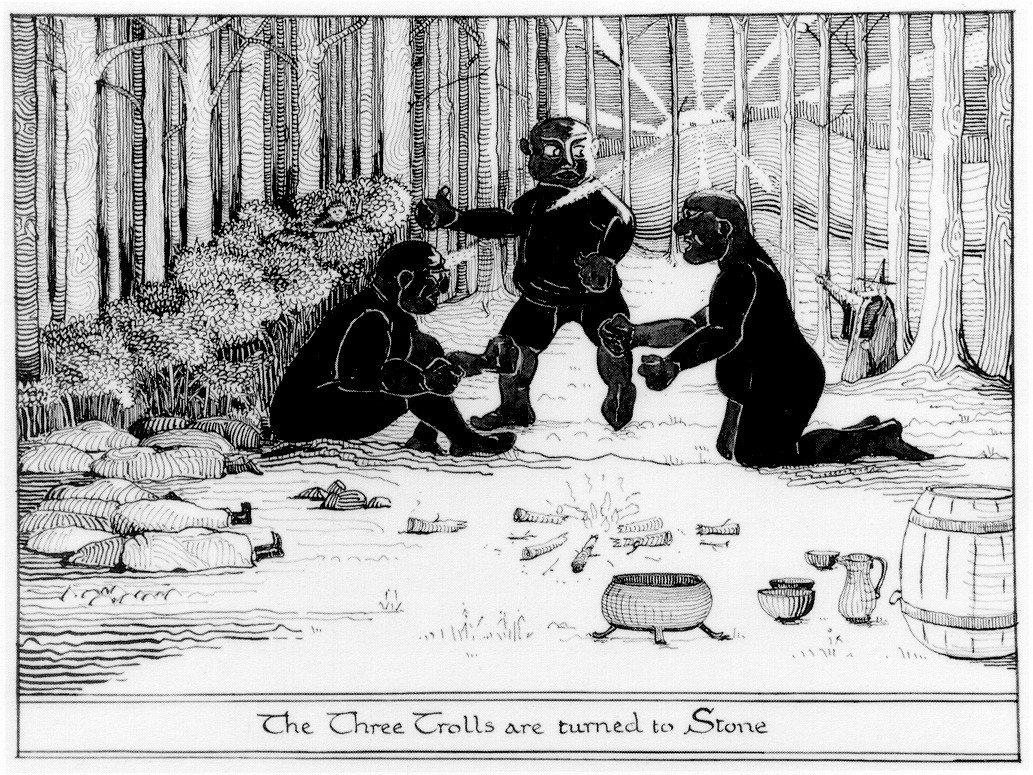But what really was it all about? I mean was there an underlying motive involved? Was there something more to it that nobody has yet discovered?
I think there is an awful lot Tolkien failed to inform us about. And there are very good reasons - as we shall see.
But to reveal, why Tolkien called his trolls Bill, Bert & Tom - I will need to digress:
(a) Firstly, I need to discuss the embedment of Jack (of fairy tale) parallels in Tolkien’s children’s story.
(b) Secondly, I want to emphasize and illustrate how much liking Tolkien had for ‘parody’.
(a) The Hobbit and Jack & the Beanstalk
So the time is ripe to look into Jack and the Beanstalk and comprehend its deeper enmeshment within The Hobbit.
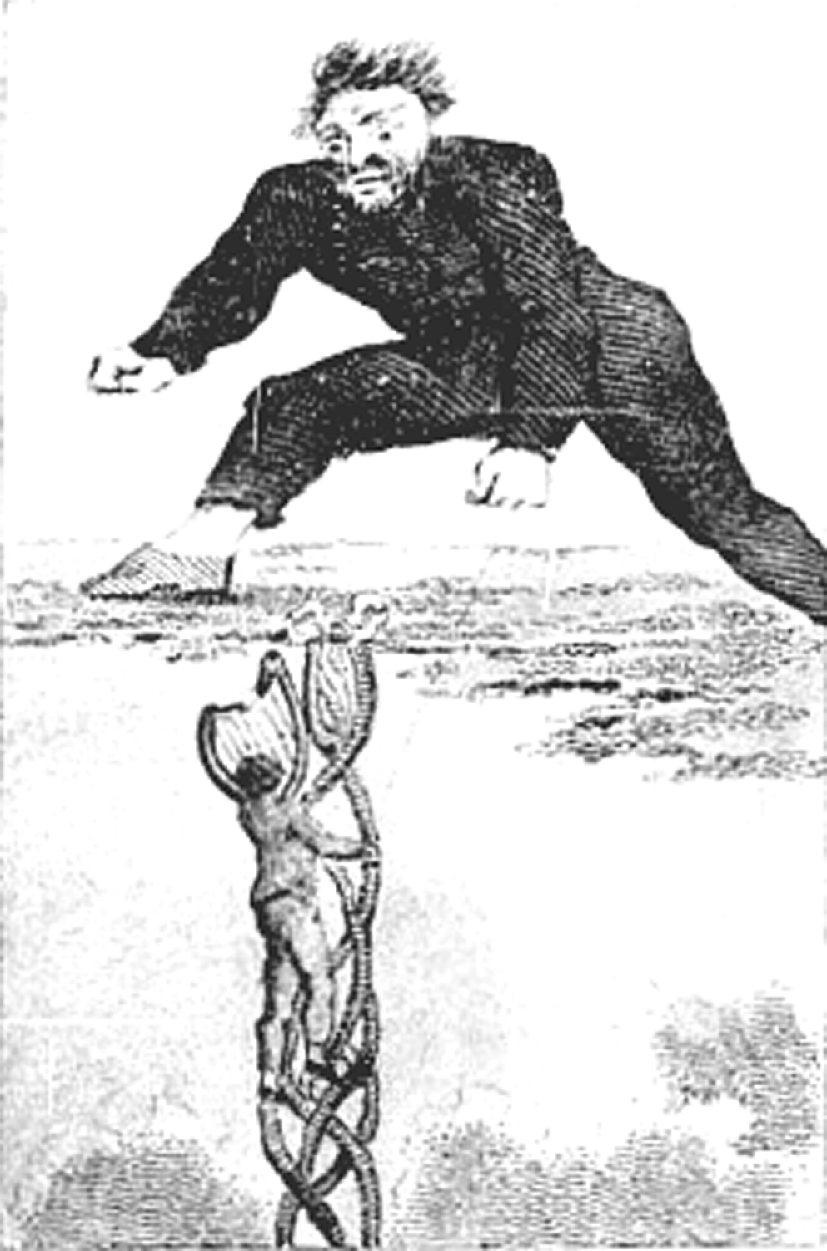
Jack escaping from the Giant, ‘The History of Jack and the Beanstalk’, Benjamin Tabart, 1807
‘Why would Tolkien have had an interest in Jack and the Beanstalk?’ – I can imagine the wary reader question. ‘Surely that would be the wrong kind of fairy tale. Isn’t it a nursery tale?’
Hmm … firstly it’s arguably England’s most famous handed down children’s story. And secondly, classifying it as only fit for nurseries would be rather speculative. A pronouncement of a definitive prognosis would be quite wrong. Because even nursery tales are in some instances a mere subset of fairy tales. And Tolkien wasn’t altogether convinced that an adult link to them should be casually cast aside. Indeed, this attitude is reflected by the inclusion of The Man in the Moon Stayed Up Too Late in The Lord of the Rings. A deliberate echo of our ‘modern day’ Hey Diddle Diddle – here was one long-lost and exploitable connection to English lore. Quite obviously then, if the Professor thought that modern-day nursery rhymes could have buried but meaningful links to sing-song of old, then choosing Jack and the Beanstalk is really not so strange!
Now the first known printed recording of Jack and the Beanstalk dates from 1734. Under the title of Jack Spriggins and the Enchanted Bean, the story was related in Round about our Coal Fire. Forming one of several ‘Jack tales’, the hero is a quintessential part of traditional English folklore from whom many phrases, rhymes and sayings have sprung.
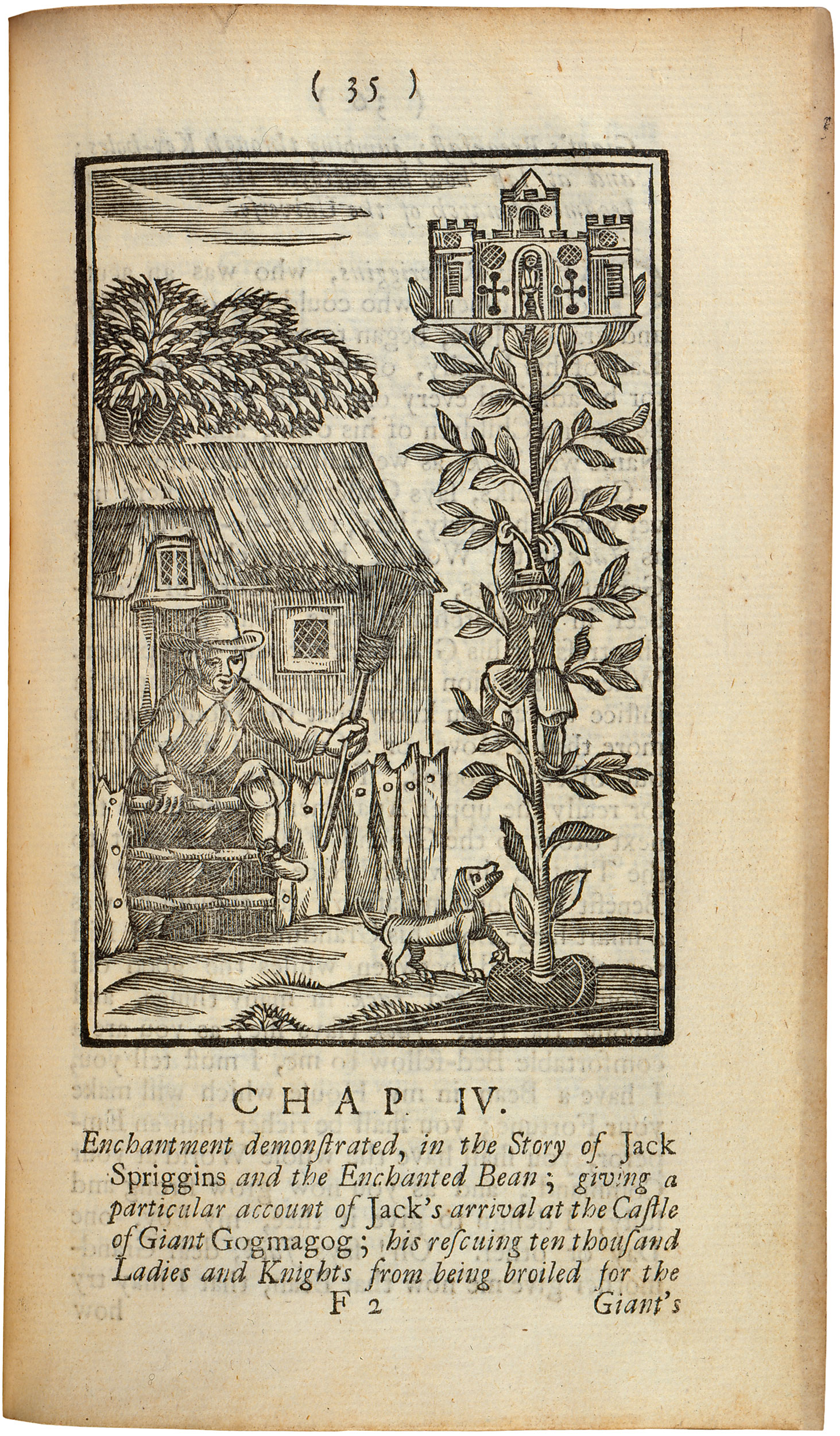
First page of ‘Chapter IV – The Story of Jack Spriggins and the Enchanted Bean’, Round about our Coal Fire, 1734
However, the Professor knew that historical elements of the Beanstalk narrative were traceable much further back than the early 18th century. In remarking upon it in his famous Beowulf lecture, clearly he implied the tale preceded John Milton who died in 1674:
“… if Milton had recounted the story of Jack and the Beanstalk in noble verse … he might have done worse …”. – Beowulf: The Monsters and the Critics, J.R.R. Tolkien, 1936
Most likely the tale went back even further with the written connection being lost in all but traces from the Elizabethan/Jacobean eras – where the famous ‘fe-fi-fo-fum’ rhyme was imbued in the dramatic plays of George Peele, Thomas Nashe and William Shakespeare:
“Fee, fa, fum, here is the Englishman, …”. – The Old Wives Tale, G. Peele, 1595
“… Fy, fa, fum, I smell the blood of an English-man”. – Have with you to Saffron-walden, T. Nashe, 1596
“Child Rowland to the dark tower came, His word was still, Fie, foh, and fum, I smell the blood of a British man.” - King Lear, W. Shakespeare, 1605
In more modern times it’s the tale’s 1890 recital by Joseph Jacobs in English Fairy Tales which has established itself as the one closest to the original storyline. And so it’s the one, for comparative purposes, that’s been dwelt on most. To peel away Tolkien’s exterior literary facade and expose matching underlying structural patterns, the drafts of The Lord of the Rings will be examined and then a step back further in time to The Hobbit will be seen to be extraordinarily fruitful.
But first I will turn to early life before scrutinizing The History of Middle-earth series. To piece together a credible yarn there is also factual ‘external’ matter to consider – namely Tolkien’s childhood experiences. It is the run-ins with the ‘Black and White Ogres’ of Sarehole, Birmingham that are most interesting. We need to be particularly mindful of these formative years. Especially as Tolkien himself said:
“… it is the particular use in a particular situation of any motive, whether invented, deliberately borrowed, or unconsciously remembered that is the most interesting thing to consider.” – The Letters of J.R.R. Tolkien, Letter #337 – 25 May 1972, Edited by H. Carpenter, 1981
As young boys, both Ronald and his brother Hilary were fascinated by the mill at Sarehole and the adjacent pond which they on and off frequented. Equally, they were terrified by the two working millers, one of whom they nicknamed the ‘White Ogre’, and a local farmer – dubbed the ‘Black Ogre’. It appears that much of the mill’s trade in those times fell to pulverizing bones (instead of grinding grain for flour). The end product subsequently found usage as farm fertilizer:
“… and now the mill’s chief work was the grinding of bones to make manure.” – Tolkien: A biography, Birmingham – pg. 20, H. Carpenter, 1977
The ordeals with the ‘White Ogre’ covered in bone dust and the more aggressive ‘Black Ogre’ were vivid childhood memories that remained solidified in Tolkien’s mind. Thus, one may rightfully hypothesize such experiences carried through into his books:
“As for knowing Sarehole Mill, it dominated my childhood. I lived in a small cottage almost immediately beside it, and the old miller of my day and his son were characters of wonder and terror to a small child.” – The Letters of J.R.R. Tolkien, Letter #303 – 6 May 1968, Edited by H. Carpenter, 1981
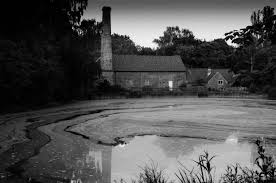
The Mill and Pond at Sarehole, Birmingham
What was the origin of the last two lines of the classic English rhyme? :
“ ‘… Fee-fi-fo-fum, I smell the blood of an Englishman, Be he alive or be he dead I’ll have his bones to grind my bread.’ ” – English Fairy Tales, Jack and the Beanstalk – pg. 63, J. Jacobs, 1890 (my underlined emphasis)
Tolkien might have known that in medieval times bone meal was used as a nutritional supplement and was sometimes mixed in with bread. More than likely he had run across Shakespeare’s rather macabre recipe for a baked pie:
“Hark, villains! I will grind your bones to dust
And with your blood and it I’ll make a paste,
And of the paste a coffin I will rear
And make two pasties of your shameful heads, … …
Receive the blood: and when that they are dead,
Let me go grind their bones to powder small
And with this hateful liquor temper it,
And in that paste let their vile heads be baked.”
– Titus Andronicus, Act 5 Scene 2, W. Shakespeare, c. 1588-1593
What were the real origins of the ‘Jack tales’? Was there a logical and simple explanation? These are the sort of questions that probably rattled around in an inquisitive philologist’s mind. Could it be that the sources of the ‘fe-fi-fo-fum’ rhyme and English ogres lay in the trades of farming and milling?
…. to be continued







